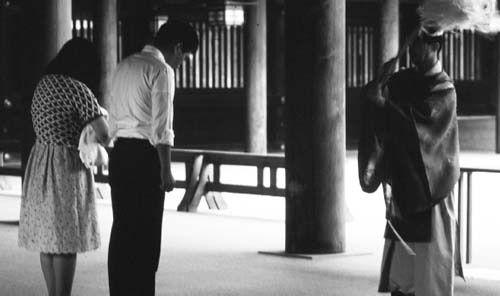ShintoCustoms and Rituals |
How do trials or ordeals function in Shinto ritual? |
Remnants of ancient practices reminiscent of “trial by fire” survive in several Shinto ceremonies, most of which are still practiced, in relatively few locations. Unique to the Suwa shrine in Nagasaki is a frightening ritual called yutate-sai. At the end of the purification and exorcism rituals, the chief priest of the shrine thrusts his hand into a kettle of boiling water. This rite dates back to the Shugendo sect of late medieval times. Now it represents not the ascetic or magical power of ancient practitioners, or the power to banish spirits possessing an unfortunate soul, but the need for radical purification. Some sects use a variation on this ritual, with a priest scattering scalding water on the main participant with a bamboo stick. A related ritual of trial involves walking over burning coals. Called chinka shiki (“taming the fire”), the ceremony involves circumambulating the bed of embers before walking across it. Anyone present may participate after the principal ritualists complete the ordeal. Again the purpose is purification, and prayers may include petitioning the kami of the moon to exert his influence on the fire kami.

A young couple bring their new baby for a special blessing at Tokyo’s Meiji Jingu. The officiating priest waves over them the purifying wand called the haraigushi. In the background is the courtyard that separates the Hall of Worship (haiden) from the Hall of Offerings (heiden), where the priestly staff perform more exclusive rituals. Yet another, smaller courtyard stands between that and the holy of holies (honden).
